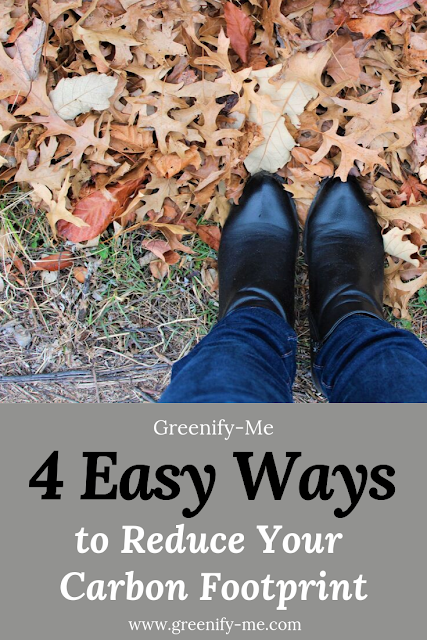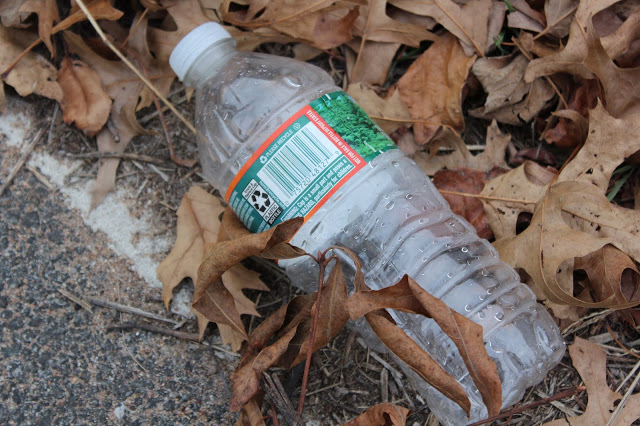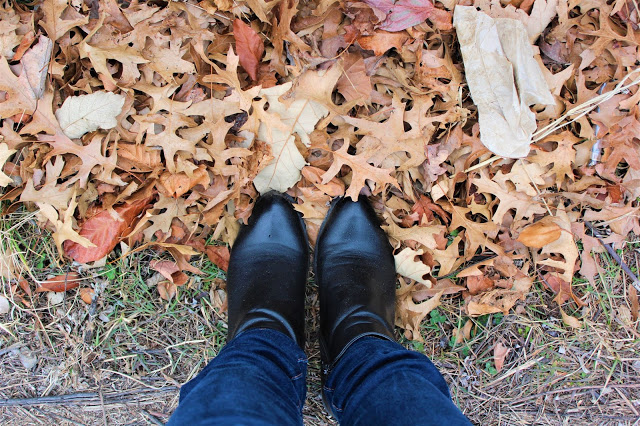1. Reduce reliance on single use plastic
Most plastic is petroleum based. That means it’s made using oil and natural gas harvested from the earth. There are seven major kinds of plastic, and as you can imagine, it takes a lot of energy and resources to make all of them.
The truth is, plastics have a carbon-heavy life cycle. To make plastic and transport it, it takes a bunch of energy and emits greenhouse gases. Even after plastic is disposed, whether it be through recycling, dumping or incinerating, they still emit carbon dioxide.
Since large scale production started, over 8.3 billion tons of plastic has been created. Of that, only 9 percent has actually been recycled. The rest ends up in landfills or our environment.
And recycling isn’t the answer either: When plastic is recycled, it’s really downcycled. This means it can never be the same item more than once, but instead becomes an item of lesser quality. Eventually, it will no longer be recyclable and it’ll just end up in a landfill or worse, our environment. There, it’ll emit toxins and take hundreds of years to break down.
This is why it’s so imperative we reduce our reliance on single use plastics. Instead, we should opt for reusables whenever possible.
It might seem odd, but the best way to understand what trash you’re creating is to actually look in your trash. Dig through it if you have to. Get to know your trash and you may be surprised at what you find.
More than likely, a lot of your trash will consist of single use to-go items like straws, plastic cups, coffee cups, plastic bottles, plastic bags, and plastic utensils. But I’m sure you’ll also notice other things like food packaging waste and even food itself.
I recommend building a zero waste to-go kit for starters: You can keep it in your bag or in your car so you’ll always be prepared. Your kit should include one or two reusable straws, a reusable water bottle, a travel mug, reusable utensils, and a reusable bag.
The next time you go and grab a coffee, ask for it to stay in a reusable mug. If you’re really in a rush, ask them to put it in your reusable travel mug. It’s honestly just a matter of making simple switches that add up.
As far as food packaging goes, I recommend going to the farmers market. It’s relatively easy to shop there plastic free because almost everything there has no packaging. There’s also no plastic produce stickers on the food. Here are my zero waste farmers market essentials.
You should also consider heading to the bulk food store. Having a zero waste pantry is easy when you can get dry goods package free!
If you want more tips, be sure to check out these easy ways to reduce trash.
2. Eat locally and seasonally
Do you know how long it takes for your food to get to you? Most of the fresh food you see in grocery stores are imported from overseas. They can take anywhere from 2 to 3 weeks to get to you. Imagine the amount of emissions that produces?
That’s why it’s so important to shop locally and seasonally. The quicker food takes to get to you, the less emissions it will produce. It won’t have to sit in traffic spewing exhaust fumes into the air for weeks – maybe just a few hours or a day tops.
Go to your local farmers market and support the local farmers there. At mine, we have farmers from Pennsylvania, New Jersey and Upstate New York. All those places are relatively close, being I live in New York. Locally grown typically means less than 400 miles from its origin, after all.
Locally grown food is also a lot fresher, tastier and more nutritious. That’s because when food is grown locally, it’s picked as soon as it’s ripe and gets to you quickly.
However, food imported overseas is typically picked unripe to ensure it will last the trip. This means it won’t taste nearly as good or have the same nutrients as just-picked food.
3. Eat more plants
This doesn’t mean you have to go vegan or vegetarian, but you should definitely eat a more plant-based diet. The reason for this is because animal agriculture produces a lot of emissions.
Too often, forests are burned down and cleared to make room for livestock. This is a really big problem because when you burn trees, you release all the carbon dioxide they captured into the atmosphere. This only contributes to climate change.
In fact, this was the main reason the Amazon was burning for weeks recently.
Not to mention, when cattle digest their food, they also burp up methane, another potent greenhouse gas. As silly as that sounds, methane is actually 30 times more potent than carbon dioxide.
Also, lots of fossil fuels are used to operate farm machinery, make fertilizer and ship food around the globe, all of which generate emissions. There’s also huge patches of land that are used just to farm food for cattle, when they could be utilized for crops humans eat (or just left untouched to promote biodiversity).
It’s safe to say what you eat definitely has an impact on climate change. That’s why you should consider eating a more plant-based diet. Try going meatless several times a week, instead preparing some vegetarian or vegan dishes.
If you must buy meat, always choose to go to the local butcher and ask them how they raise their cattle. Most of the meat used in fast food restaurants is actually rainforest meat which contributes to deforestation. Make sure to avoid that and instead look for higher quality, grass fed options.
4. Compost
Composting is great for the environment. Instead of tossing your food scraps in the trash, you’re putting them to good use!
Composting helps not only reduce carbon dioxide, but also methane gas. When food scraps are sent to the landfill, they don’t break down properly and wind up emitting methane gas and other powerful greenhouse gases.
However, when you compost, you’re creating a closed loop system that reduces your carbon footprint. The food scraps are able to return to the earth and create wonderful compost that will help plants grow and flourish.
To get started composting, I recommend evaluating how much space you have. If you live within a small space, you can still compost. Here’s my guide to composting in an apartment.
If you have a lot of space to work with, consider investing in a compost bin or tumbler.
You can compost a multitude of things, such as fruit and vegetables peels, fruit pits and cores, the ends of fruit and vegetables, and egg shells. You can even compost paper, cardboard, hair, waxed paper, dry pet food, and saw dust.
For those who prefer a more hands off method, just do what I do: Take all your food scraps to the farmers market. Farmers markets usually have food scrap drop off bins on location. They’ll happily take all your scraps and transform them into life giving compost for you. It’s a really nice, hands off approach.
You can also see if there’s a community garden in your area that will accept your scraps. If you have neighbors that have gardens or chickens, you can ask them if they’d like your scraps too.
A great app for locating where to drop off your food scraps near you is Share Waste. I highly recommend it! It helps you find food scrap collection sites in your area and lets you set up a drop off time that works for you.
What are some ways you reduce your carbon footprint?
If you enjoyed this post, be sure to share it! If you like my content, sign up for my newsletter to get notified every time I write a new blog post. To support me even further, please consider buying me a cup of tea to help support my blog.






